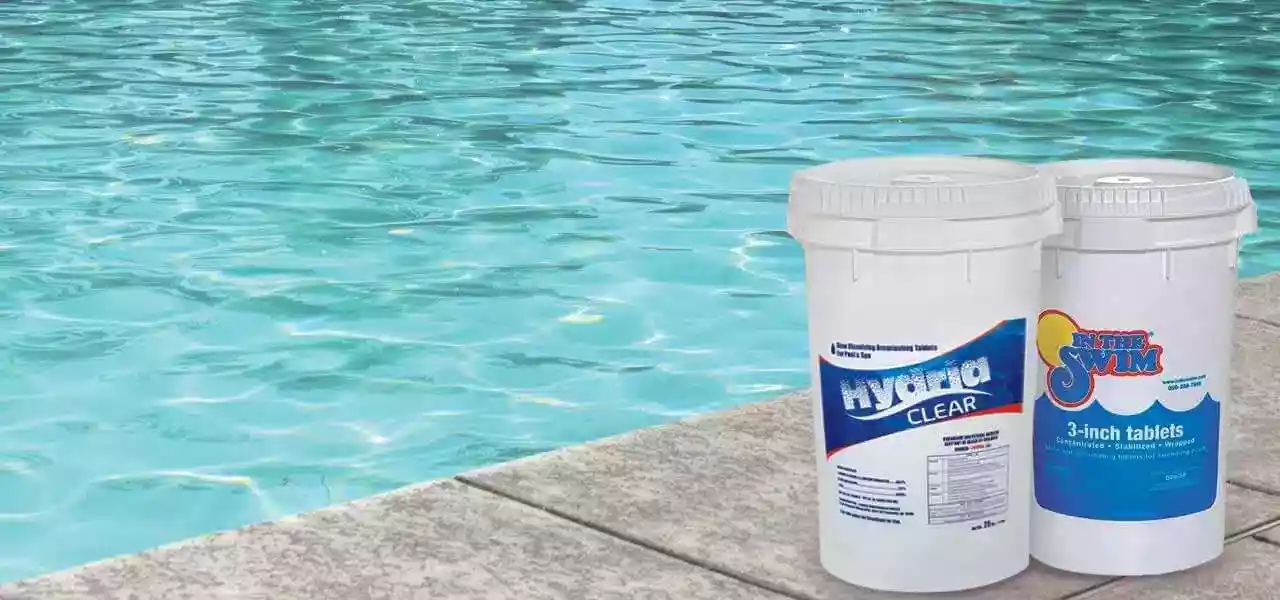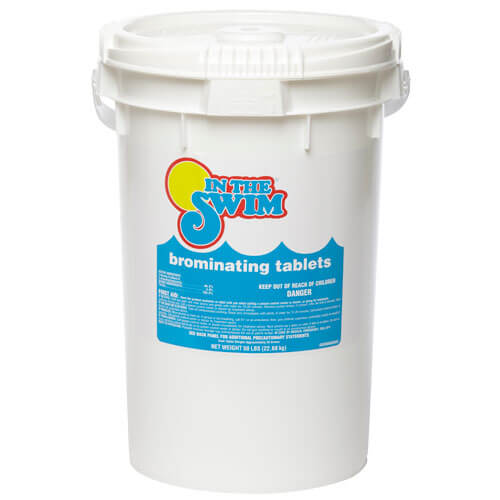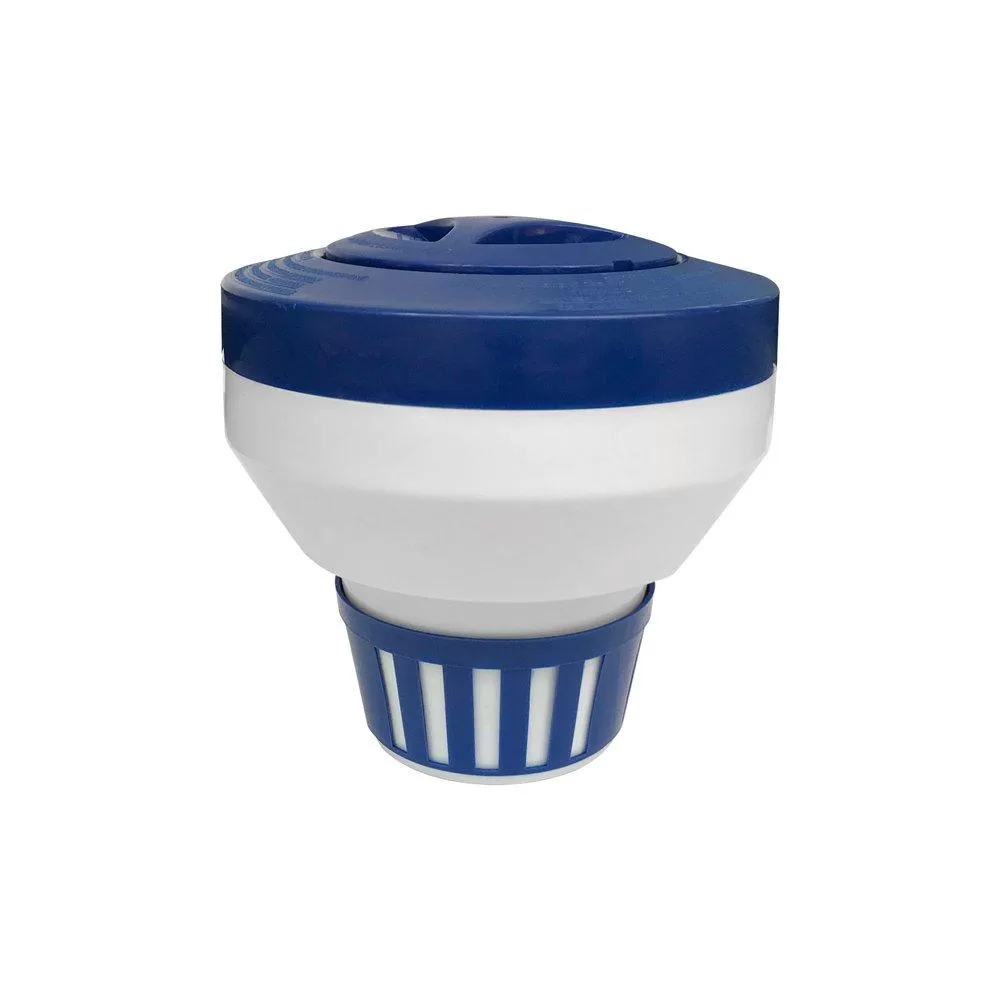FREE Standard Shipping On All Orders $100 or More!*

Chlorine vs. Bromine: What's the Difference?
Whether you're a brand new pool owner or seasoned pro, chances are you have heard about chlorine. The powerful water sanitizer is synonymous with pools and swimming, but have you heard about its cousin, bromine? This lesser known sanitizer is similar to chlorine, but with a few key differences. In this post, we will discuss the chlorine vs. bromine debate, and help you decide which sanitizer is best for your pool or spa!
Chlorine vs. Bromine
First things first, let's cover the basics. Chlorine and bromine are sanitizers that help keep your pool or spa water clean and safe. Both chlorine and bromine come in tablet and granular form, while chlorine is also available in liquid form.
Understanding how each sanitizer works is key to deciding which one is the best option for your pool or spa. While both chlorine and bromine clean your pool, they do so in different ways. Let's dive into the differences between chlorine and bromine, and discuss the unique role of each sanitizer.
How Chlorine Sanitizes Your Pool or Spa

As many pool owners know, chlorine is what is known as an oxidizing sanitizer. When chlorine is added to your pool water, it immediately zeroes in on contaminants and neutralizes them through oxidation. During this process, chlorine molecules penetrate the contaminant and strip the electron particles, breaking down the contaminant. Following the oxidation process, waste byproducts called chloramines are leftover.
Chloramines create the unpleasant, overwhelming chemical smell and skin irritation commonly associated with chlorine. The production of chloramines is the biggest inconvenience when using a chlorine sanitizer. Many people assume the intense smell of chlorine means their pool is clean, but in reality, it means the opposite. As chloramines build up over time, they decrease the amount of Free Available Chlorine — the active, sanitizing molecules — and leave your water unprotected. The only way to clear the chloramines is to shock your pool, also known as reaching breakpoint chlorination. When your pool hits breakpoint chlorination, the chlorine levels exceed the contaminant or oxidant demand, and Free Available Chlorine starts to increase.
Chlorine is available in tablets — the most common form — sticks, and granules. Tablets and sticks work well in floating dispensers, and in-line or off-line chlorinators. Granular chlorine needs to be pre-dissolved in a bucket of water before being dispersed throughout the pool.
Ideal Chlorine Levels:
- Pool: 2.0–4.0 ppm
- Spa: 2.0–5.0 ppm
How Bromine Sanitizes Your Pool or Spa

While chlorine oxidizes contaminants to get rid of them, bromine eliminates contaminants through ionization. During ionization, bromine particles attack and break apart the pollutant molecules. But unlike the ineffective and frustrating chloramines left over after chlorine oxidation, bromine produces bromamine molecules that continue to sanitize the water after ionization. Chlorine-free pool shock will reactivate the bromamine molecules, returning them to their full strength.
Bromine is more limited than chlorine regarding the forms it comes in and how it's distributed in your pool. Bromine is only available in tablet and granular form, and works best in a floating dispenser. Because bromine tablets take longer to dissolve than chlorine tablets, they don't work well in in-line or off-line chlorinators.
Due to its slow-dissolving nature, bromine takes longer to build up a residual in the water, and is difficult to raise quickly if the level drops. A bromine booster is a great product to use if your bromine levels drop suddenly or you need to raise them quickly. Bromine boosters instantly build a bromine residual in your pool or spa.
Ideal Bromine Levels:
- Pool: 2.0–4.0 ppm
- Spa: 4.0–6.0 ppm
Which Sanitizer is Better: Chlorine or Bromine?
The answer to which sanitizer is best depends on whether you're sanitizing an indoor or outdoor spa or pool. Chlorine and bromine are both effective sanitizers, but each one has its own optimal working conditions, and its own pros and cons.
Advantages of Chlorine
- Typically half the cost of bromine sanitizers.
- Compatibility with Cyanuric Acid (stabilizer/conditioner) protects it against UV evaporation.
- Sanitizes water faster than bromine.
- It's both an oxidizer and a sanitizer.
- Easier to quickly raise or lower levels.
Advantages of Bromine
- Stays effective at higher pH levels.
- Remains stable in warmer water.
- Can be reactivated or re-used by adding an oxidizing shock.
- Bromamines retain killing power, chloramines do not.
- Bromamines do not gas off the water surface, as chloramines do.
- Often less-irritating to people with sensitive skin and eyes.
Frequently Asked Questions
Below are a few commonly asked questions regarding caring for a bromine pool and what type of pool it is best suited for.
Can You Shock a Bromine Pool?
You can shock a bromine pool with non-chlorine shock or chlorine shock. Shocking a bromine pool oxidizes contaminants and creates bromamines, which aren't harmful. Refer to the shock dosing instructions before adding shock to your bromine pool. The standard dose for a chlorine pool is typically sufficient for a bromine pool.
Can You Use Bromine in Outdoor Pools?
While bromine can be used in outdoor pools, we don't recommend it because bromine is not compatible with Cyanuric Acid (CYA). CYA protects chlorine molecules from the sun and prevents evaporation. Therefore, Bromine is at a high risk for evaporation when used in outdoor pools.
Should You Use Bromine or Chlorine in Indoor Pools?
Use a bromine sanitizer for indoor pools that receive little sunlight. Bromamines, the leftover bromine particles, do not "gas-off" the surface of the water like chloramines. Chloramines are potentially harmful to metal structures like pool ladders, furniture, and any other metal when trapped indoors. Outdoor pools are better suited for handling chloramines because of the abundant airflow.
Switching Sanitizers
Perhaps the most important part of having a chlorine or bromine-based pool is knowing what to do if you want to switch sanitizers. Switching from chlorine to bromine is simple, while switching from bromine to chlorine is a laborious process.
Chlorine to Bromine
To switch from chlorine to bromine, simply stop using chlorine tablets, and begin using bromine tablets! Replace your chlorine floater or in/off-line chlorinator to prevent any chlorine residue from coming into contact with the bromine.
Bromine to Chlorine

Changing your pool's sanitizer from bromine to chlorine is not quite as simple. Making this change requires a full pool drain to remove the build-up of bromine ions in the water — which will continue to convert added chlorine into bromine. Even when bromine levels are zero, there are still ions present, which is why draining is necessary. As with switching from chlorine to bromine, replace your existing floating chlorinator with a new one to avoid cross contamination.
There you have it — the ultimate guide for the chlorine vs. bromine sanitizer debate! Each sanitizer plays an important role in pool and spa care, and neither one is "better" than the other. The best sanitizer is the one that works for you and your pool.